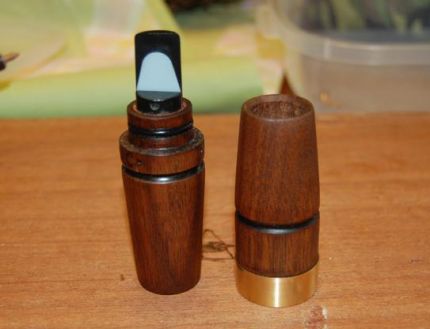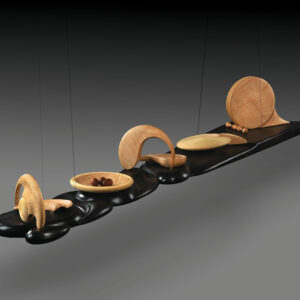We launched our latest gallery photo challenge on FineWoodworking.com a few weeks ago, asking readers to share photos of wood turned objects. The entries have ranged from amazingly intricate segmented turnings, to a three-legged stool, to curvy bowls and vessels made from highly figured woods.
One entry that caught my attention this weekend is a turned walnut Canada goose bird call posted by reader Adam Clarkson, who considers himself a hobby woodworker and bird caller. When I saw Adam’s post I immediately thought this was one entry that’s better heard than seen. So I Adam to send us a sound clip of his goose call in action. Sounds just like the flocks of geese that frequent these Connecticut parts.
How To Make a Goose Call
And for those of you interested in the art of goose call making, read Adam’s response below:
Goose calls like the ones I make are generally turned on a mandrel from a square blank which you pre-drill. My particular calls are drilled in four different operations for each required diameter.
The brass band is press fit, epoxied, and pinned with a copper nail. Its purpose is both decorative and functional as it prevents splitting of the barrel from removal and insertion of the “keg” section and from wood movement due to extreme moisture conditions.

Turned Canada goose call from black walnut by Adam Clarkson. See it in the Gallery.
The tenon is sized for a very tight interference fit with the barrel. Mine and most other calls are fitted with o-rings to provide an airtight seal and prevent losing the keg section as it hangs from your lanyard in the field.
The noise making mechanism, known as the “guts”, consist of a tone board, wedge and mylar reed. These are commercially available from several online vendors and from many of “the majors” as replacement parts for their production calls.
As far as achieving all the vocalizations of the Canada goose, there is a certain amount of alchemy involved. From the design standpoint, the sound of the call is affected by the length of the parts and the diameter of the holes, not so much by the species of wood used (which is particularly important for duck calls). The call must then be tuned by adjusting the position of the reed, wedge and toneboard relative to each other and to the keg and barrel.
Operationally, learning the goose call is much like learning to play a musical instrument, requiring breath control, use of voice. Finally, hand positioning provides back pressure which is required to produce the sharp “clucks” and to change pitch and tone so that the caller can imitate several different individual geese.
A fact that many people may not know about goose calls is that there is a very large, very serious professional calling competition circuit. Larger competitions often involve sponsors, pro staffs and callers who have achieved quasi celebrity status. Some of the talent on display at these competitions is astounding.
Of particular interest to woodworkers would be the decorative carved and brilliantly executed segmented turnings created by the truly gifted call makers. Here is a link to this years contest winners from the Callmakers & Collectors Association of America; some of the work on display rivals that of the most talented furniture makers.























Log in or create an account to post a comment.
Sign up Log in